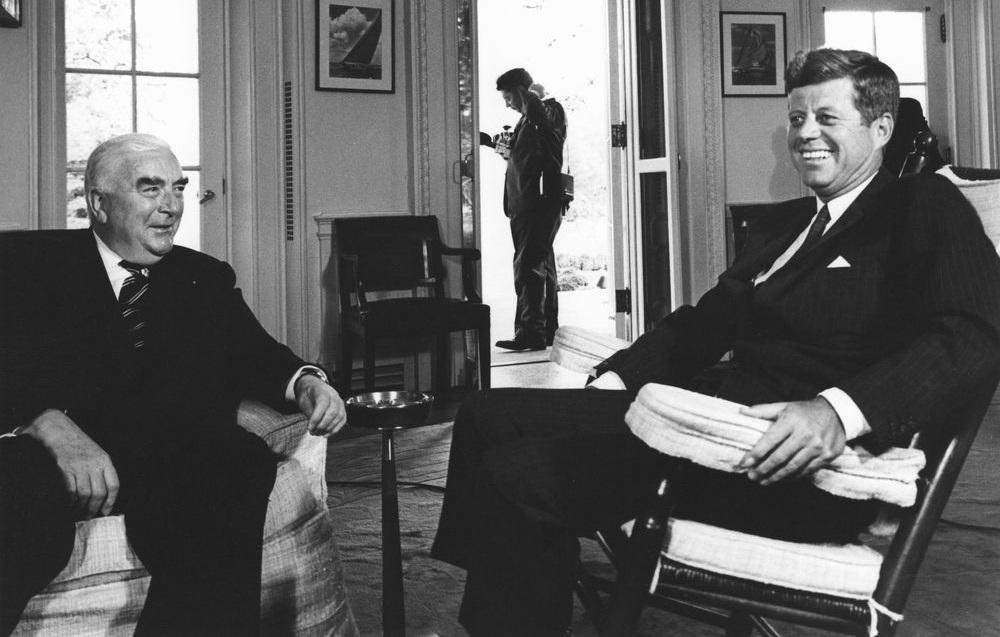
This post is adapted from the introduction to ANZUS at 70: the past, present and future of the alliance, released on 18 August. Over the coming weeks, The Strategist will be publishing a selection of chapters from this new ASPI book.
The ANZUS Treaty was signed on 1 September 1951 in San Francisco. It was the product of energetic Australian lobbying to secure a formal US commitment to Australian and New Zealand security. At the time, the shape of Asian security after World War II was still developing.
To examine this crucial relationship in detail, ASPI has produced a book, ANZUS at 70, that explores the past, present and future of the alliance relationship, drawing on a wide range of authors with deep professional interest in the alliance. Edited by long-time journalist and former executive editor of The Strategist Patrick Walters, it provides lively and comprehensible analysis of key historical points in the life of the treaty and of the broader Australia–US relationship, which traces its defence origins back to before World War I.
The treaty was a response to the strategic circumstances of the day. It came to pass at a time when Canberra worried that a ‘soft’ peace treaty with Japan might one day allow a return of a militarised regime to threaten the region. That fear quickly receded in the face of a more immediate challenge.
On 25 June 1950, North Korea crossed the 38th parallel to attack South Korea. Australia quickly committed forces to the conflict. Towards the end of 1950, China entered the war with an estimated 200,000 troops. Prime Minister Robert Menzies wrote in the journal Foreign Affairs in January 1951 that ‘the real and deadly and present question is whether inside the next two years’ we would be able to resist ‘a vast Communist aggression against one manifestation of which we are actually now fighting in Korea’.
The ANZUS treaty is brief, comprising a short preamble and 11 articles. Article III states: ‘The Parties will consult together whenever in the opinion of any of them the territorial integrity, political independence or security of any of the Parties is threatened in the Pacific.’ Article IV says: ‘Each Party recognizes that an armed attack in the Pacific Area on any of the Parties would be dangerous to its own peace and safety and declares that it would act to meet the common danger in accordance with its constitutional processes.’
Seventy years on, in 2021, the Indo‑Pacific region faces real, deadly and present questions about defence and security. What’s remarkable about ANZUS is that it continues to be the central pillar of Australian defence and security policy and a key part of the US’s ‘hub and spokes’ alliance system globally. (As we shall see in these pages, New Zealand took a different course on ANZUS but remains an ally of Australia and a close friend of the US.)
Alliances more typically are short‑lived arrangements designed to meet specific threats, but the adaptability of ANZUS is such that the alliance cooperation it supports changes to meet new demands, to support new opportunities for cooperation and, indeed, to promote wider security interests in the region.
ANZUS today encompasses much more than defence and intelligence cooperation. Newer areas of collaboration include work on cybersecurity, space, supply chains, industrial production, rare earths, emerging science and technology areas such as quantum computing, climate change and wider engagement with countries and institutions beyond ANZUS’s initial scope or intention.
In 2021, ANZUS acts as a core component of wider and deeper relations between Australia and the US. This study aims to show the range of those ties, to understand the many and varied challenges we face today and to understand how ANZUS might be shaped to meet future events. ASPI is grateful to the American Chamber of Commerce in Australia for the financial support that enabled this volume to be produced. As with all our work, ASPI, and the various authors in this study, remain independent in their editorial judgements.